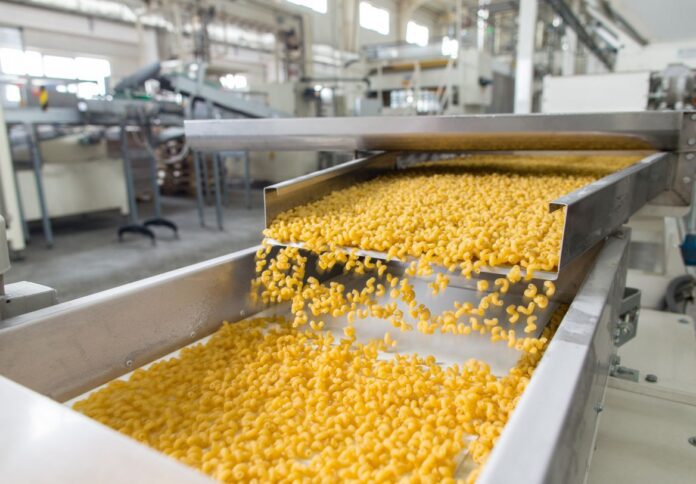
Australia has long been a formidable player in global trade, with its exports spanning diverse sectors from agriculture and mining to education and technology.
Amid challenges posed by the COVID-19 pandemic and subsequent global supply chain disruptions, Australia’s export strategies have evolved to meet the demands of a post-pandemic world.
One particularly successful strategy has been the diversification of export markets, with a focus on expanding partnerships beyond traditional markets like China, and strengthening ties with new regions such as Southeast Asia, India, and Europe.
The shift towards diversification
For years, Australia’s export economy has been heavily reliant on China, with exports to the nation accounting for nearly 40 per cent of the total share pre-pandemic. However, geopolitical tensions and pandemic-induced disruptions highlighted the risks of over-reliance on a single market. This led to a proactive shift by the Australian government and industries towards diversifying export destinations.
In response to this, the Australian government launched initiatives such as the Agriculture Trade and Market Access Cooperation (ATMAC) and Export Market Development Grants (EMDG) to encourage exporters to explore new markets. By providing financial assistance and market intelligence, these programs helped Australian businesses tap into high-growth markets like India, Japan, Vietnam, and South Korea.
Case Study: wine exports to Southeast Asia
One of the most remarkable stories of success comes from the wine industry. Historically, China was Australia’s largest market for wine exports. However, when tariffs were imposed on Australian wine in 2020, the industry faced a sharp decline in sales to China.
Rather than crumble, Australian wine producers pivoted towards Southeast Asia, particularly Singapore and Thailand, which saw a 70 per cent increase in demand for Australian wines by 2023.
The Australian Grape & Wine Incorporated and Wine Australia organisations played key roles in this transition. With the help of EMDG grants, they launched targeted marketing campaigns and invested in creating digital trade platforms to reach new customers in these markets.
By promoting the quality and diversity of Australian wines and fostering partnerships with local distributors, they rapidly grew their export footprints.
Strengthening ties with India
Another critical aspect of Australia’s recent export success lies in its renewed focus on India. The India-Australia Economic Cooperation and Trade Agreement (ECTA), signed in 2022, marked a new era for trade between the two nations.
This agreement eliminated tariffs on over 85 per cent of Australian exports to India, with sectors like coal, alumina, and horticulture benefitting the most.
Australia’s minerals sector, for instance, saw a significant uptick in coal exports to India. India’s fast-growing economy and rising energy demands have made it a key destination for Australian thermal coal.
In the financial year 2023, exports of Australian coal to India surged by 50 per cent, positioning India as Australia’s third-largest coal market. This success reflects the strategic alignment between the two nations’ economic priorities.
Leveraging Digital trade and innovation
One of the key enablers of Australia’s export strategy post-pandemic has been the emphasis on digital trade. The Australian government recognised that digital technologies could offer new ways for exporters to engage with international markets and overcome the logistical challenges posed by the pandemic.
Through programs like the Digital Services Trade Strategy (DST), the government aimed to help businesses leverage digital platforms to facilitate cross-border trade.
Exporters in sectors like fintech, edtech, and digital health have been able to expand their reach into key markets in Southeast Asia, the Middle East, and North America.
Edtech companies, for example, saw increased demand for their services in India and Indonesia. The ability to deliver education solutions online allowed Australian edtech firms to build new customer bases in regions where traditional education delivery was disrupted.
This innovative approach helped many businesses not only survive but thrive in an increasingly digital global marketplace.
Sustainability as a selling point
Australia’s success in exporting goods and services post-pandemic also stems from the global emphasis on sustainability and green growth.
With more countries prioritising sustainability in their economic recovery strategies, Australian businesses have capitalized on this trend by aligning their exports with these demands.
The mining sector has increasingly promoted its sustainable mining practices, while the agriculture sector has emphasised its clean and green credentials. Australia’s clean energy exports—particularly green hydrogen—are set to grow exponentially as countries around the world strive to meet net-zero emissions targets.
In May 2023, Australia signed a Memorandum of Understanding (MoU) with Germany to collaborate on green hydrogen production and export.
This partnership positions Australia as a future powerhouse for renewable energy exports, with Germany set to become a key market for Australian green hydrogen by 2030.
A blueprint for resilience
Australia’s recent export success story is a testament to the nation’s resilience and adaptability in the face of global challenges. Through proactive diversification, strategic trade agreements, digital innovation, and a focus on sustainability, Australia has secured its place as a dynamic player in global trade.
This approach offers valuable lessons for other countries seeking to navigate the complexities of a post-pandemic global economy. By embracing new opportunities and pivoting when necessary, Australia’s exporters have not only weathered the storm but are now well-positioned for continued growth in the coming decade.



















